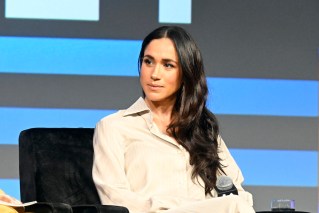The Stats Guy: Migration – what’s it good for? As it turns out, quite a lot


As a migrant nation, Australia must focus on integrating newcomers into the social fabric, writes Simon Kuestenmacher. Image: TND
This year will see the return of migrants to Australia. Universities and inner-city apartment markets are desperate for international students, most industries wait for skilled migrants to fix their current skills shortages, plus our current workforce isn’t nearly big enough to build all the nice infrastructure projects our governments budgeted for.
This is a good time for us to think about migration from the big picture perspective. My goal in today’s column is to provide you with a few migration-related numbers that you can have in the back of your mind when reading about the topic in the future.
Living in a place like Australia, where a large minority wasn’t born in the country itself, is a pretty rare thing. Of the 90 countries home to at least 10 million people, only Saudi Arabia (39 per cent) and Jordan (34 per cent) house more migrants than Australia (30 per cent). In case you are interested, of the 149 countries with more than one million people, Australia ranks 10th, and out of all 232 nations (including tiny microstates) Australia ranks 37th.
Globally, migrants are a small minority. Only 3.6 per cent of all humans live outside their country of birth. We are still talking about a big group of about 281 million people though. The trendline has been moving upwards and we’ve been seeing more rather than less migration. Thirty years ago, the world only saw half as many migrants (153 million or 2.9 per cent of the global population). The world is becoming a more diverse and multicultural place, and even insular societies like have Japan opened themselves up to migration recently.
 Besides international migration there is also internal migration. People move between cities within their country of birth at higher rates than ever – in China alone the number of internal migrants is estimated at over 150 million.
Besides international migration there is also internal migration. People move between cities within their country of birth at higher rates than ever – in China alone the number of internal migrants is estimated at over 150 million.
Internal migration around the globe is driven by the continued urbanisation move from rural areas to cities. The urbanisation rate globally stands at 56 per cent. In China and India alone, hundreds of millions of people will move from small villages to big cities in the coming decade. The two largest nations (56 per cent and 33 per cent respectively) still have urbanisation rates way below the Australian figure of 86 per cent.
People migrate when they think their lives will be better in a different location. The definition of better varies. Sometimes job prospects drive people to a new place, sometimes it’s curiosity, often it’s love. In the case of refugees, it’s the need to get away from a terrible situation.
Looking into my crystal ball, I predict the global number of migrants to only go up. Global markets and multinational businesses provide more employment opportunities for skilled workers; university exchange programs encourage cross-national marriages; climate change makes vast regions uninhabitable for millions.
On an ageing planet with rapidly falling birth rates, countries will be fighting more than ever to attract young, skilled migrants. I wrote previously about how overpopulation isn’t a problem to worry about too much, as human population will peak within forty years or so.
The successful countries of the 21st century will attract migrants. Nations with small workforces relative to their young and old populations will struggle to create enough GDP to finance their ageing populations. The relevant measure here is called the dependency ratio and examines the working age population (15-64) in relation to the non-working age population (under 15 and over 65). Compared to Japan, Australia is in a much more comfortable position here.
Integrating migrants into society remains a challenge, especially since some myths about migration persist. Traffic congestion and rising house prices are often cited as negative side-effects of migration. These are growing pains that cities go through when increasing their populations.
Cities of any size can work beautifully. The problem in Australia was that for way too long we allowed migration numbers to go up without investing at the same rate into infrastructure and housing. To fight the ills of traffic and expensive houses, we need to build stuff rather than get rid of migrants. We’ve seen this during the pandemic when migrants left the country and yet house prices went up.
As a migrant nation, Australia must focus on integrating newcomers into the social fabric. We must play the long game here. The integration of first-generation migrants is of course important, but the integration of the second generation is crucial. The kids of migrants need to socialise in childcare, kindergarten, school, and sport clubs with kids that represent the rich tapestry of Australia.
We must be much more generous in subsidising such endeavours. Free universal childcare would probably help a lot here, ensuring that kids make friendship across ethnic boundaries, while enabling parents to return to work if they so choose.
We will see more migrants in Australia – policies are clear about that. The social integration of migrants and their children must be front and centre to maintain social cohesion in the country.









